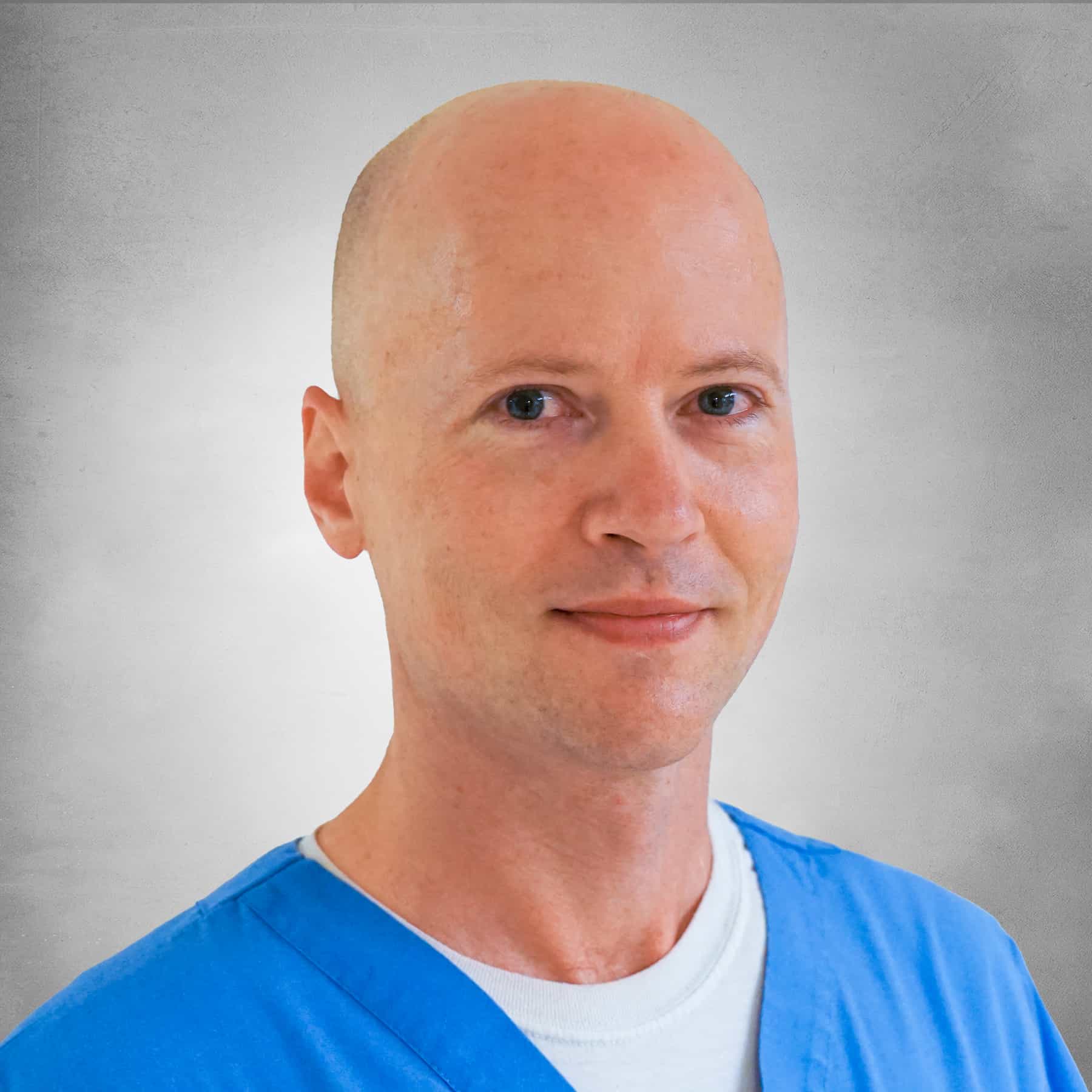Myofascial Release is a hands-on physical therapy technique that helps restore a pain-free range of motion.
Andrew Wofford, who provides the therapy at our Outpatient Rehabilitation Center, said it can help patients recover from everything from a traumatic injury to pain caused by poor posture.
Myofascial Release, which involves using pressure and stretching to release muscle tension, is typically incorporated into a comprehensive physical therapy treatment plan that also includes stretching and strengthening exercises.
Most people experience pain due to muscle tension and poor posture from time to time. If that pain becomes chronic and impacts your daily activities, a hands-on physical therapy technique called myofascial release can help.
Andrew Wofford, PTA, is a certified John Barnes Myofascial Release therapist at our Outpatient Rehabilitation Center, located on our main campus at 842 Jefferson Avenue on the 3rd floor of the Adams Pavilion. Wofford said this therapy intervention has an excellent track record of helping patients restore a pain-free range of motion.
“Myofascial release can help treat a lot of conditions, from a patient who is recovering from a traumatic injury to post-operative scarring to someone who has pain due to poor posture,” Wofford said. “If you have recurring pain that interferes with daily life and affects your sleep or mood, myofascial release has applications anywhere on the body, and the outcomes are typically very good.”
At the Regional One Health Outpatient Rehabilitation Center, patients can seek treatment based on a physician’s referral or on their own by making an appointment for an evaluation with a physical therapist. If the therapist determines the patient can benefit from myofascial release, the technique can be incorporated into a comprehensive treatment plan.

Andrew Wofford provides Myofascial Release therapy at our Outpatient Rehabilitation Center. The treatment helps release muscle tension to restore pain-free range of motion.
Wofford said patients can usually expect their therapy sessions to include about 35-40 minutes of myofascial release and 15-20 minutes of stretching and strengthening exercises.
For the myofascial release portion of the session, the patient is positioned on a therapy table as Wofford takes them through a series of hands-on therapies and stretches that are typically held for up to five minutes at a time. He said his goal as a practitioner is to pinpoint the areas where the tissue is tight so he can use pressure and stretching, based on MFR principles, to release the tightness and restrictions.
“The pressure I exert on the body helps reorganize the specialized cells in the connective tissue to increase the mobility and the resilience of the tissue,” he explained. “That helps reduce tension in the muscles and improves the range of motion.”
For patients, that results in a sense of relaxation and pain relief.
“During treatment, what the patient will typically experience is relaxation. Some people report a superficial spreading sensation under the skin, or an intermittent stinging sensation,” Wofford said. “It’s a light manual therapy, so it’s very low stress on a patient’s body.”
The specifics of the treatment will depend on each patient’s individual needs and goals.
For patients who experienced a traumatic illness or injury, Wofford usually focuses on pain relief and normalizing posture. These patients have often been lying in bed for a long time during their recovery, he said, so they need to relearn proper posture and movement to avoid chronic pain.
When a patient has pain due to a non-acute issue like poor posture, repetitive motion disorders or a chronic pain syndrome, Wofford focuses on the part of the body that is causing problems.
“If a patient has shoulder pain and one shoulder is more forward, I release tension on the front of the body. For neck pain, we work on restoring cervical posture to rebalance the head. A lot of back pain comes from imbalance in the pelvis and core, so we release the abdomen, lower back and muscles in the thighs,” he said.

Patients typically have very good outcomes from Myofascial Release. The therapy can help with everything from recovering from a traumatic injury to easing pain caused by poor posture.
Wofford said that benefits patients not only in terms of how they feel, but in their ability to do the other things they need to do to heal. He said myofascial release can help patients achieve the range of motion they need to complete other physical therapy exercises.
“You don’t have that restriction stopping you from doing things,” he said. “It makes it easier on the patient and helps them get where they want to go quicker.”
Typically, a patient will have two or three myofascial release sessions per week, depending on the severity of their condition. Wofford said it is rewarding to help patients recover and to see how dramatically their quality of life can improve.
“In my opinion, almost everyone can benefit from myofascial release,” he said. “It can take time, but if patients are compliant with their stretching programs and put in the effort, we see very good outcomes in terms of clearing up harmful movement patterns and postures.”